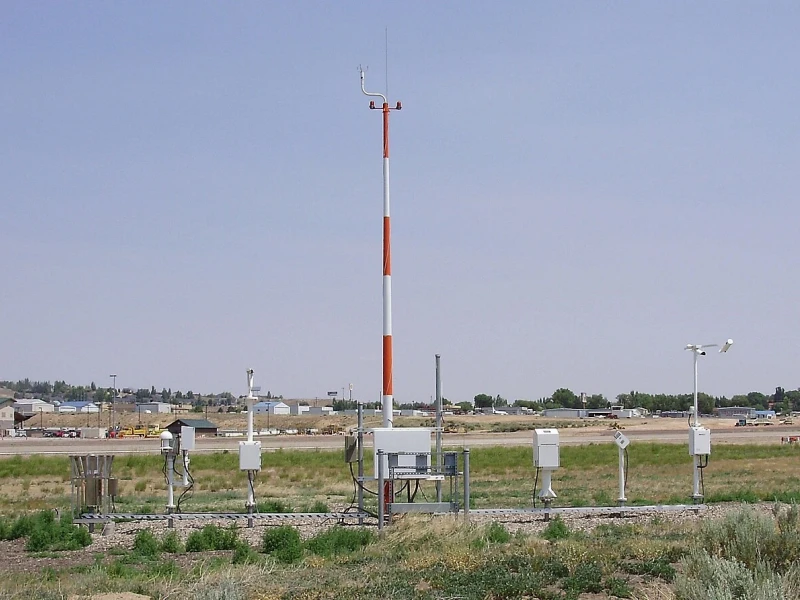The Function of Weather Stations in Ensuring Aviation Safety
Weather is a vital factor in ensuring aviation safety. Pilots, air traffic controllers, and aviation experts depend significantly on precise and current weather data to make well-informed decisions during flight planning and operations. Weather conditions like fog, thunderstorms, strong winds, and visibility have a substantial effect on flight safety and efficiency. To gather, analyze, and share weather information, weather stations are strategically located worldwide. This article delves into the crucial role function of weather stations play in aviation safety and the technologies used to collect accurate meteorological data that are essential to the aviation sector.
Function of Weather Stations: An Integral Component in Flight Planning and Safety
Weather stations are ground-based sites equipped with sophisticated meteorological tools and sensors designed to measure a variety of atmospheric conditions. These stations gather extensive weather-related data, such as temperature, humidity, wind speed and direction, air pressure, precipitation amounts, and visibility. This information is crucial for pilots to evaluate both current and upcoming weather conditions along their flight path. By supplying vital data, weather stations play a pivotal role in flight planning and safety, aiding pilots in avoiding dangerous weather, optimizing fuel usage, and ensuring passenger comfort.
The Significance of Real-time Weather Information for Aviation Activities
Up-to-the-minute weather information is crucial for aviation activities, allowing pilots to make prompt decisions. Weather stations play a key role by supplying precise and up-to-date details about conditions throughout the flight path. This encompasses data on regional weather trends, major weather occurrences, and any adverse atmospheric phenomena. Real-time weather updates assist pilots in recognizing and steering clear of turbulence, storms, intense rainfall, or other severe weather situations, thereby safeguarding the well-being of passengers and crew members.
Moreover, data from meteorological stations plays a crucial role in aiding air traffic controllers to efficiently manage air traffic flow and maximize airspace capacity. With access to real-time weather information, controllers can reroute flights, modify departure and arrival schedules, and collaborate with pilots to steer clear of congested zones impacted by adverse weather conditions. This synergy between meteorological stations and air traffic management is vital for enhancing aviation safety by averting potentially hazardous situations due to severe weather.
Weather stations utilize a range of instruments and sensors to accurately gather and assess atmospheric conditions. These technologies are essential for ensuring that the data collected is both accurate and dependable. Among the primary instruments employed in weather stations are:
1. Thermometers:
Used to gauge air temperature, both in shaded areas and under direct sunlight, offering crucial insights into variations that can influence aircraft performance.
2. Hygrometers:
Instruments that measure the moisture content in the air, essential for assessing the likelihood of cloud development, icing conditions, or diminished visibility.
3. Anemometers:
Tools designed to gauge wind velocity and direction, allowing pilots and air traffic controllers to evaluate the effects of crosswinds or tailwinds.
4. Barometers:
Devices that measure atmospheric pressure, vital for pilots to comprehend shifting weather conditions and pinpoint regions of high or low pressure.
5. Rain Gauges:
Straightforward yet efficient tools for quantifying precipitation, including rain, snow, or hail, which are crucial for evaluating the risk of icing or water-related dangers.
Weather Station Networks: Collaborative Initiatives for Improved Aviation Safety
Weather station networks are established worldwide to support the exchange of meteorological data among various aviation stakeholders. These networks comprise linked weather stations managed by meteorological agencies, airports, and other aviation-related entities. Through joint efforts, these networks facilitate the real-time dissemination of weather data across different regions and nations.
This connectivity enables pilots, air traffic controllers, and meteorologists to access weather information from a variety of sources, leading to more informed decision-making. Weather station networks use advanced communication technologies to efficiently spread weather updates and make them available to all relevant parties.
Additionally, these networks are vital for improving aviation safety. They provide a broad – scale, comprehensive look at meteorological conditions. This enables more accurate weather forecasts and ensures safer flights.
Conclusion
Weather stations play a crucial role in maintaining aviation safety by gathering, analyzing, and distributing precise weather information. With real-time updates from these stations, pilots can plan their flights more effectively, steering clear of dangerous weather and ensuring passenger comfort.
The accurate data collected through sophisticated instruments and sensors in weather stations empower aviation professionals to make well-informed decisions, while networks of weather stations facilitate the sharing of essential meteorological data. As weather station capabilities continue to improve and expand, the aviation sector can better manage the risks associated with adverse weather, thereby enhancing flight safety.
Hunan Coda Electronic Tech Co., Ltd is renowned for developing innovative products such as sensor solutions and bolstering their market leadership with strategic marketing campaigns to establish a premium brand.
Purchase sensor solution environmental monitoring systems products online from China at competitive prices from Coda Sensors.
Issues with OEM sensors are not uncommon; nearly everyone encounters them at some stage in their lives, and some may never fully resolve them. However, advancements in environmental monitoring systems technology now offer an ideal solution to address these persistent challenges effectively.
